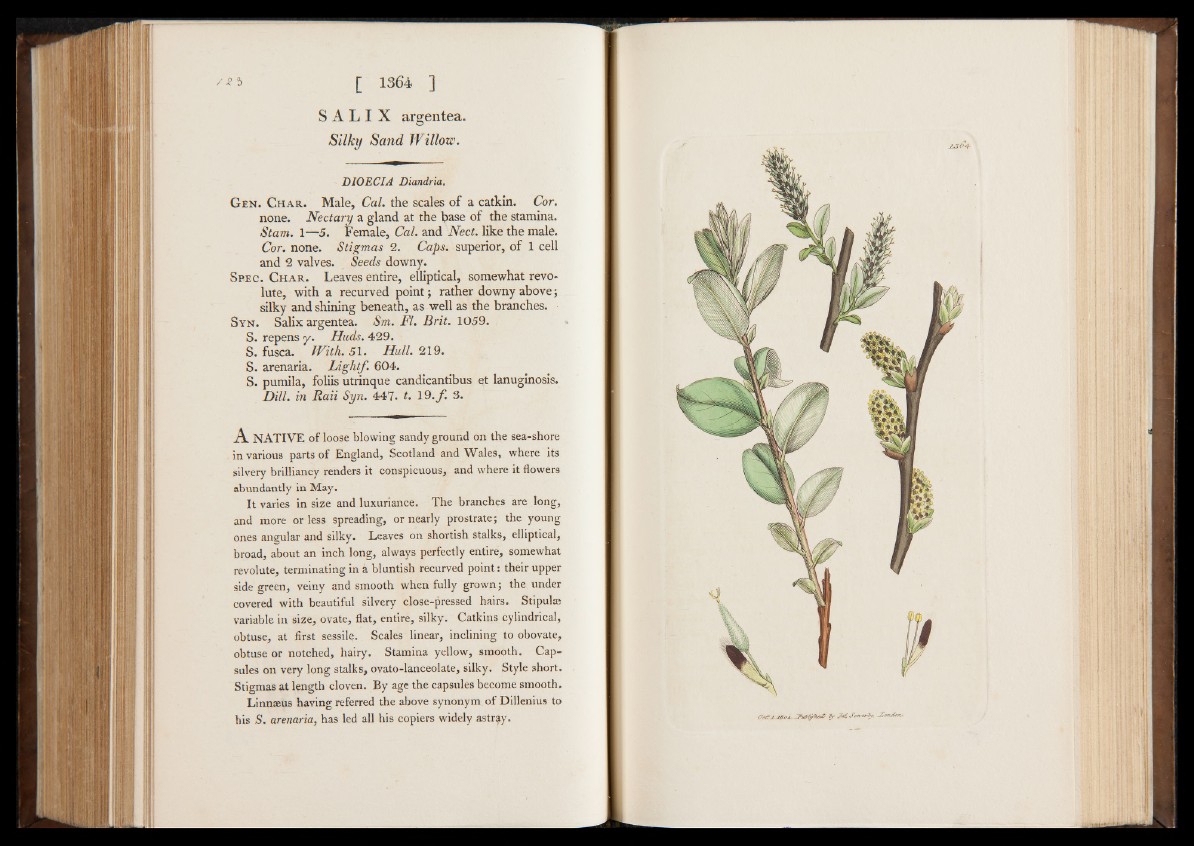
/•PS [ 1364 ]
S A L I X argentea.
Silky Sand Willow.
DIOECIA Diandria.
G en. Char. Male, Cal. the scales of a catkin. Cor.
none. Nectary a gland at the base of the stamina.
Stam. 1— 5. Female, Cal. and Nect. like the male.
Cor. none. Stigmas 2. Caps, superior, of 1 cell
and 2 valves. Seeds downy.
Spec. Char. Leaves entire, elliptical, somewhat revolute,
with a recurved point; rather downy above j
silky and shining beneath, as well as the branches.
Syn. Salix argentea. Sm. FI. Brit. 1059.
S. repens y. Huds. 429.
S. fusca. With. 51. Hull. 219.
S. arenaria. Lightf. 604.
S. pumila, foliis utrinque candicantibus et lanuginosis.
Dill, in Raii Syn. 447. t. 19./ . 3.
A NATIVE of loose blowing sandy ground on the sea-shore
in various parts of England, Scotland and Wales, where its
silvery brilliancy renders it conspicuous, and where it flowers
abundantly in May.
It varies in size and luxuriance. The branches are long,
and more or less spreading, or nearly prostrate; the young
ones angular and silky. Leaves on shortish stalks, elliptical,
broad, about an inch long, always perfectly entire, somewhat
revolute, terminating in a bluntish recurved point: their upper
side green, veiny and smooth when fully grown; the under
covered with beautiful silvery close-pressed hairs. Stipulae
variable in size, ovate, flat, entire, silky. Catkins cylindrical,
obtuse, at first sessile. Scales linear, inclining to obovate,
obtuse or notched, hairy. Stamina yellow, smooth. Capsules
on very long stalks, ovato-lanceolate, silky. Style short.
Stigmas at length cloven. By age the capsules become smooth.
Linnaeus having referred the above synonym of Dillenius to
bis S. arenaria, has led all his copiers widely astray.